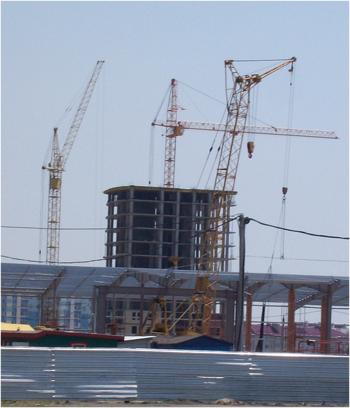Pros and cons of different tower crane types — safety starts with the right choice.
Tower Cranes: Pros and Cons of Types

It is impossible to imagine modern construction without equipment such as tower cranes, self-erecting tower cranes, stationary concrete placing booms, stationary concrete pumps, and much more.
These are not only real assistants that significantly reduce the physical workload on people, but they also optimize the construction process, reducing completion time.
When we hear the term “tower crane,” we instantly picture a massive structure with a long jib. In fact, tower cranes are equipped with a vertical tower at the top of which a so-called jib is mounted. Such designs are used in all types of modern construction. Neither industrial, civil, nor hydraulic construction can function without the use of tower cranes. Key characteristics to consider for anyone in need of such equipment include: crane assembly speed on-site, jib rotation speed, remote or cable control availability, lightweight jib design, and compliance with safety regulations.
Transporting loads to specific points of a building under construction, as well as loading, unloading, and warehouse operations – all are performed using tower cranes.
The nature of work performed depends on the technical features of the crane: lifting capacity, movement speed, rotation, and jib outreach variability.
Tower cranes can have various types of undercarriages – rail-based or truck-mounted. Rail-mounted tower cranes are more commonly used. On the construction site, these cranes easily move along rail tracks using special steel wheels powered by a travel mechanism. In addition, their installation on rails simplifies operation and improves safety.
A highly demanded service not only for construction work but also for the periodic maintenance of industrial and workshop equipment is tower crane rental. Using tower cranes, especially renting them, helps save time and reduce labor costs.
